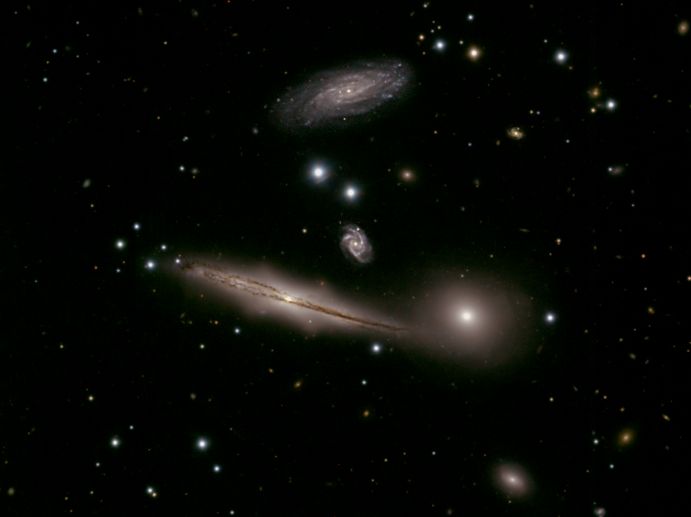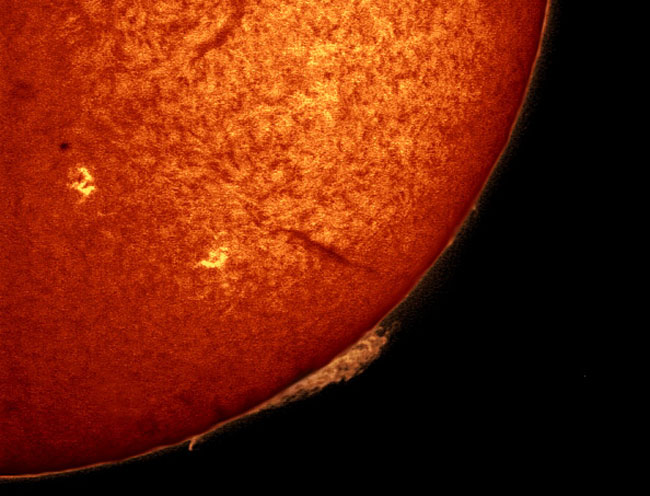
Posing fo this cosmic family photo are the galaxies of HCG Hickson Compact Group)87, about four hundred millionlight-years distant toward the amphibious constellatio Capricornus.The large edge-onspiral near picture center, the fuzzyelliptical galaxy immediately to its right, and thespiral near the top of the image are identified members of thegroup, while the small spira galaxy in the middle is likely amore distant background galaxy.In any event, a careful examination of the deep image reveals othergalaxies which certainly lie far beyon HCG 87.While not exactly locked i agroup hug, the HCG 87 galaxiesare interactinggravitationally, influencing theirfellow group members' structure and evolution This new imageis from an instrument undergoing commissioningon th Gemini Observatory'sSouth Telescope at Cerro Pachon, Chile.It compares favorably with views of this photogenic galaxy grouprecorded by th HubbleSpace Telescope.



